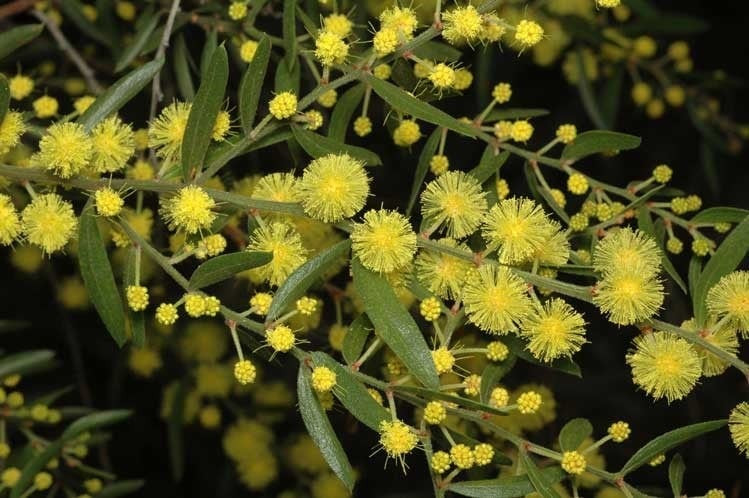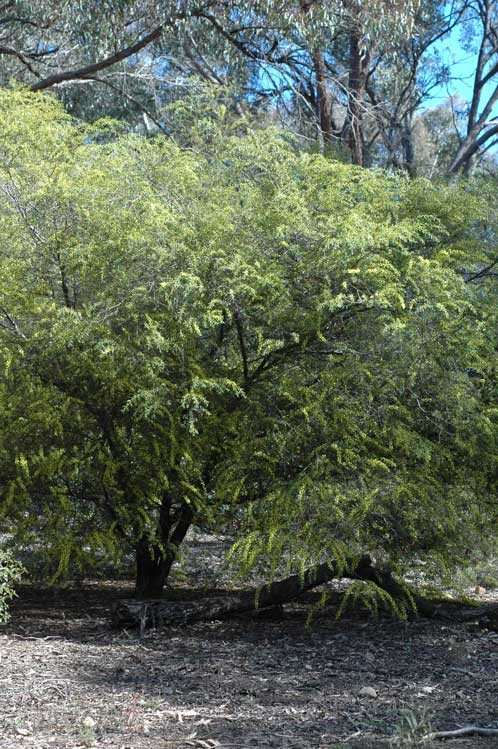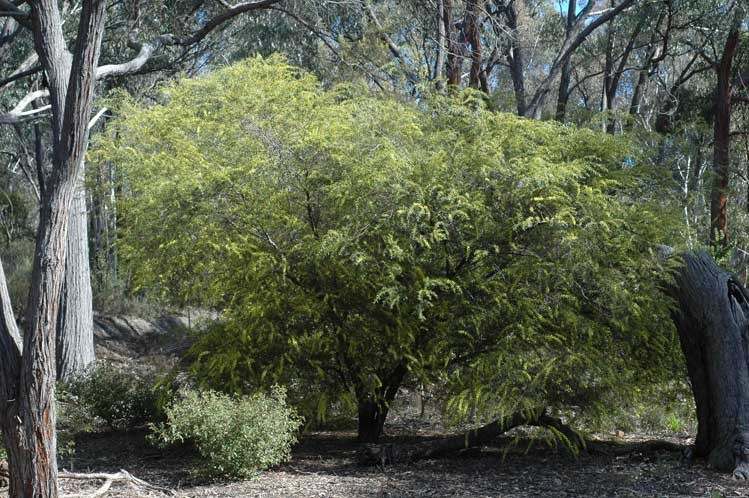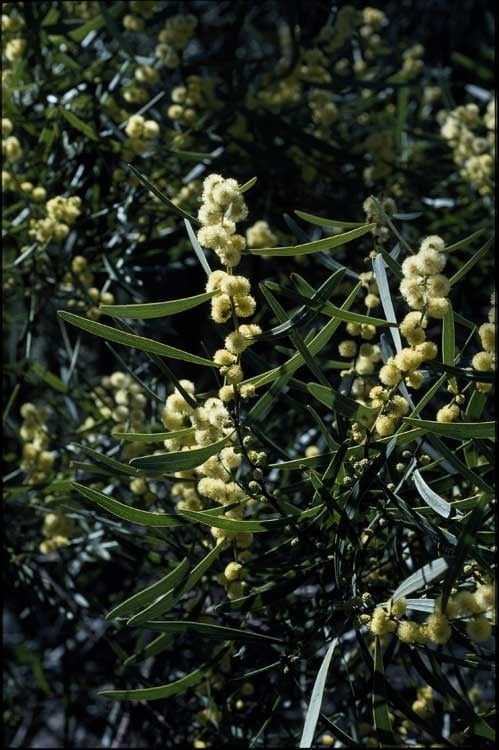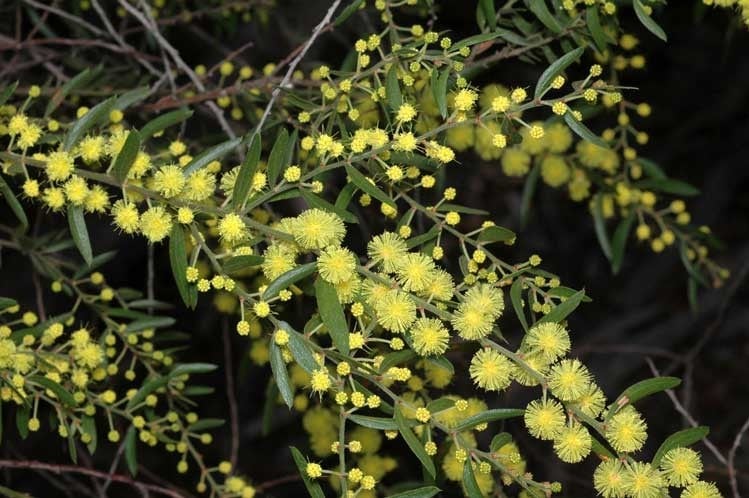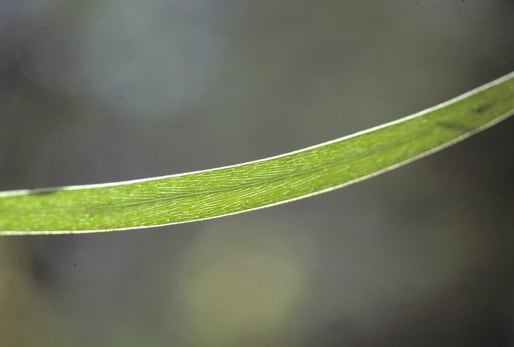Acacia stricta (Andrews) Willd.
WATTLE
Acacias of Australia
Common Name
Hop Wattle, Straight Wattle
Family
Fabaceae
Distribution
Widespread in eastern Australia from south-eastern Qld to near Mount Gambier, S.A.; it occurs mainly on lower parts of the Great Divide and on coastal plains of Vic. and N.S.W., and coastal areas of Tas., including islands of Bass Strait.
Description
Shrub or tree 1–5 m high, often suckering. Branchlets angled towards extremities, striate with yellowish resin ribs, glabrous. Phyllodes ascending to erect, normally linear to linear-oblanceolate or narrowly elliptic, straight to incurved or shallowly recurved, 3.5–14 cm long, 3–10 (-20) mm wide, narrowed at base, obtuse, thin, glabrous, dull, green to grey-green or subglaucous, with prominent resinous often mealy midrib, occasionally 2-nerved per face, closely reticulately penninerved; gland (0-) 1-2 (-3) mm above pulvinus, 1-2 mm long. Inflorescences normally simple and 2–4 per axil; peduncles normally 2–5 mm long and glabrous, slightly viscid; basal bract persistent; heads globular to obloid, 20–38-flowered, cream to lemon yellow, sometimes light golden; young buds mealy. Flowers 5‑merous; sepals united to near their apices. Pods linear, to 7 cm long, 2–5 mm wide, firmly chartaceous to thinly coriaceous, light brown, glabrous. Seeds longitudinal, oblong-elliptic, 3–4.5 mm long, shiny, dark brown; aril terminal.
Habitat
Grows in sand or sandy clay in Eucalyptus forest or woodland, or open scrub with heath understorey, often in moist sites.
Specimens
S.A.: near Devil’s Hole, Caroline Forest (Caroline, c. 15 km SE of Mt Gambier), D.N.Kraehenbuehl 963 (AD). Qld: 11 km SE of Ballandean, R.Coveny 1941 (BRI, NSW). N.S.W.: 4.8 km E of Bilpin on the Bells Line Rd, Blue Mtns, R.Coveny 2899 (NSW, PERTH). Vic.: Wattle Is., Wilson’s Promontory Natl Park, 11 Nov. 1979, P.Thomas (MEL). Tas.: Blackman Bay, 16 Aug. 1979, S.J.Jarman s.n. (PERTH).
Notes
Putative hybrids between A. stricta and A. paradoxa (syn. A. armata) are noted by A.B.Court, in J.H.Willis, Handb. Pl. Victoria 2: 216 (1973), from near Wantirna South and at Montrose, Vic.
This species appears to be most closely related to A. errabunda (W.A.). Also related to A. verniciflua and A. leprosa which are most readily distinguished by their resinous-punctate phyllodes with the lateral nerves not forming a close reticulum.
FOA Reference
Data derived from Flora of Australia Volumes 11A (2001), 11B (2001) and 12 (1998), products of ABRS, ©Commonwealth of Australia
Author
B.R.Maslin
Minor edits by B.R.Maslin & J.Rogers
This identification key and fact sheets are available as a mobile application:
URL: https://apps.lucidcentral.org/wattle/
© Copyright 2018. All rights reserved.
